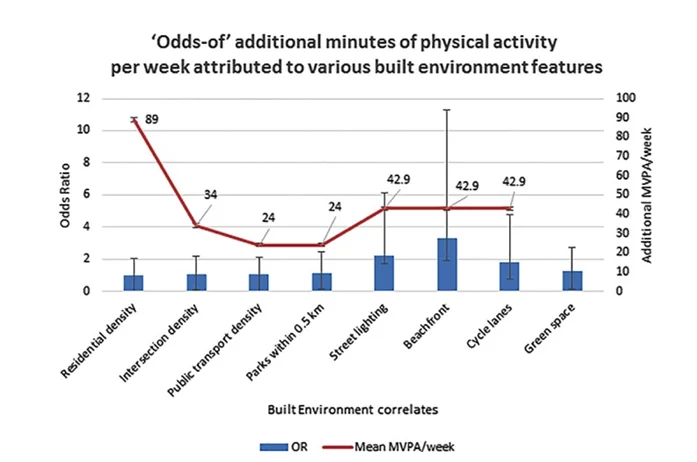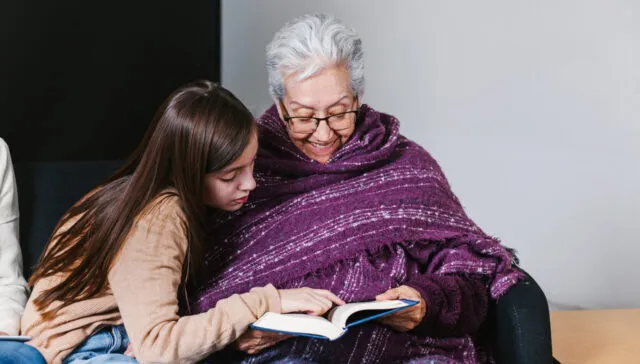Urban planning could make a difference in fighting obesity

In 2018, 42.4% of adults over the age of 20 were classified as obese. Treatment of obesity and related health problems cost $147 billion, more than three times the total state budget of Massachusetts. Typical treatments to encourage weight loss focus on physical exercise and healthy eating. Urban planning could make a difference in fighting obesity. However, many people are denied access to nutritious food and exercise spaces.
A study by Raji Devarajan and colleagues evaluated the effect of urban planning elements that aid in enhancing health and increasing exercise frequency. As illustrated in the image, eight elements within the built environment increased the odds of additional exercise, with varying effects on additional moderate to vigorous physical activity (MVPA) per week. These various attributes of the built environment that made an impact included residential density, intersection density, public transportation density, parks within a half-mile, street lighting, beachfront, bicycle lanes, and green space. The researchers found characteristics such as residential and intersection density increase the connectivity and walkability of neighborhoods. Having nearby parks, proper street lighting, and bike lanes ensure safe conditions for pedestrians and bicyclists.
Increased collaboration between public health professionals and city planners can make healthy built environment features a reality. City planning needs to focus on pedestrians rather than vehicles not only because urban planning could make a difference in fighting obesity, but also to prioritize safety and accessibility features. Preparing the built environment must be done equitably as minority and low-income neighborhoods tend to have higher obesity rates among their residents, and lack green space, adequate sidewalks, and good public transportation.
The authors argue that the health benefits of architectural improvements and people-focused city planning exist beyond increased physical activity. For example, green spaces are associated reduced stress, better birth outcomes, and improved mental wellbeing.
Boston University School of Public Health has a long history of research and collaborations around urban life and health. Faculty at BUSPH are involved in projects around the health benefits of urban climate action plans and the creation of strategies to promote active transport, build out green and blue space for mental and physical health, and measuring population and baseline rates of cardiovascular mortality and birth weight. By 2050, it is expected that 66% of the world’s population will live in cities. With this expansion comes the need for city officials to strategically plan for the future health and success of their communities.

This article was originally published as Streets Made for Walking from Public Health Post.
Public Health Post informs and inflects the broader conversation on health and social justice. Every day they feature new articles about the state of the health of the population. They invite policymakers, journalists, academics, and practitioners to share their work in ways that can influence health on a local, national, and global scale. PHP editors, working with graduate student Public Health Post Fellows, present health statistics, research summaries, interviews with important health thinkers, and easy-to-understand data graphics to start new conversations about health.
Databyte via Devarajan R, Prabhakaran D, Goenka S. Built environment for physical activity—An urban barometer, surveillance, and monitoring. Obesity Reviews. 2019;21(1).
Devin O’Donnell is an MPH candidate at Boston University School of Public Health focusing on community health and human rights. She is interested in the intersection of climate change and health, more specifically how community mobilization and cohesion are necessary for mitigation and adaptation efforts. Devin is working with the BUSPH Program on Climate and Health and the American Red Cross in these realms. In her free time, you can find Devin reliving her bakery days or exploring the nearby trails.



